Born from a Love of Food
"We delight in serving you the best food experience for you and your family from the Blount family team!"
- Todd Blount, President & CEO
Born from a Love of Food
"We delight in serving you the best food experience for you and your family from the Blount family team!"
- Todd Blount, President & CEO
Bringing our love of food to others for five generations!

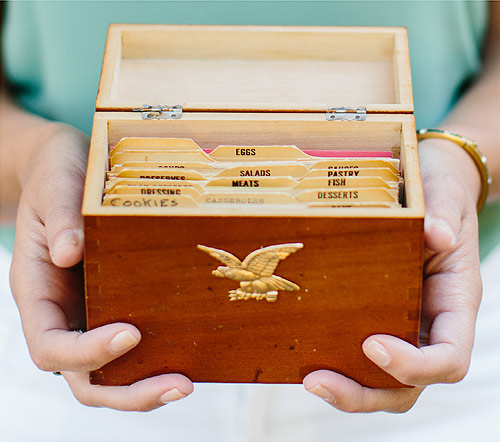
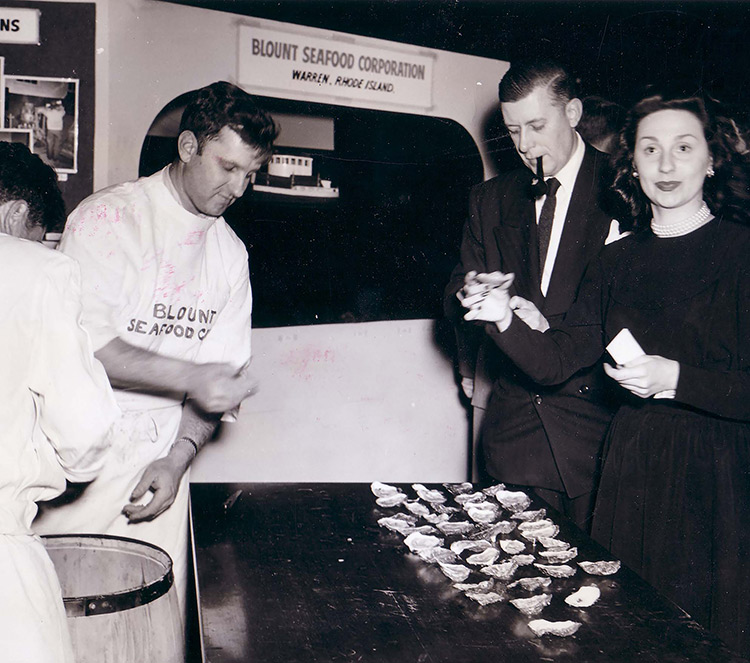 Born from a love of eating well, our team creates premium-quality foods crafted with a blend of tradition and innovation. We collaboratively create our many products with enthusiasm and integrity. Our offering will always evolve and continually improve by listening to consumers, by building collaborative relationships, by being an inspiring workplace, and by taking action to help sustain our communities and our planet.
Born from a love of eating well, our team creates premium-quality foods crafted with a blend of tradition and innovation. We collaboratively create our many products with enthusiasm and integrity. Our offering will always evolve and continually improve by listening to consumers, by building collaborative relationships, by being an inspiring workplace, and by taking action to help sustain our communities and our planet.
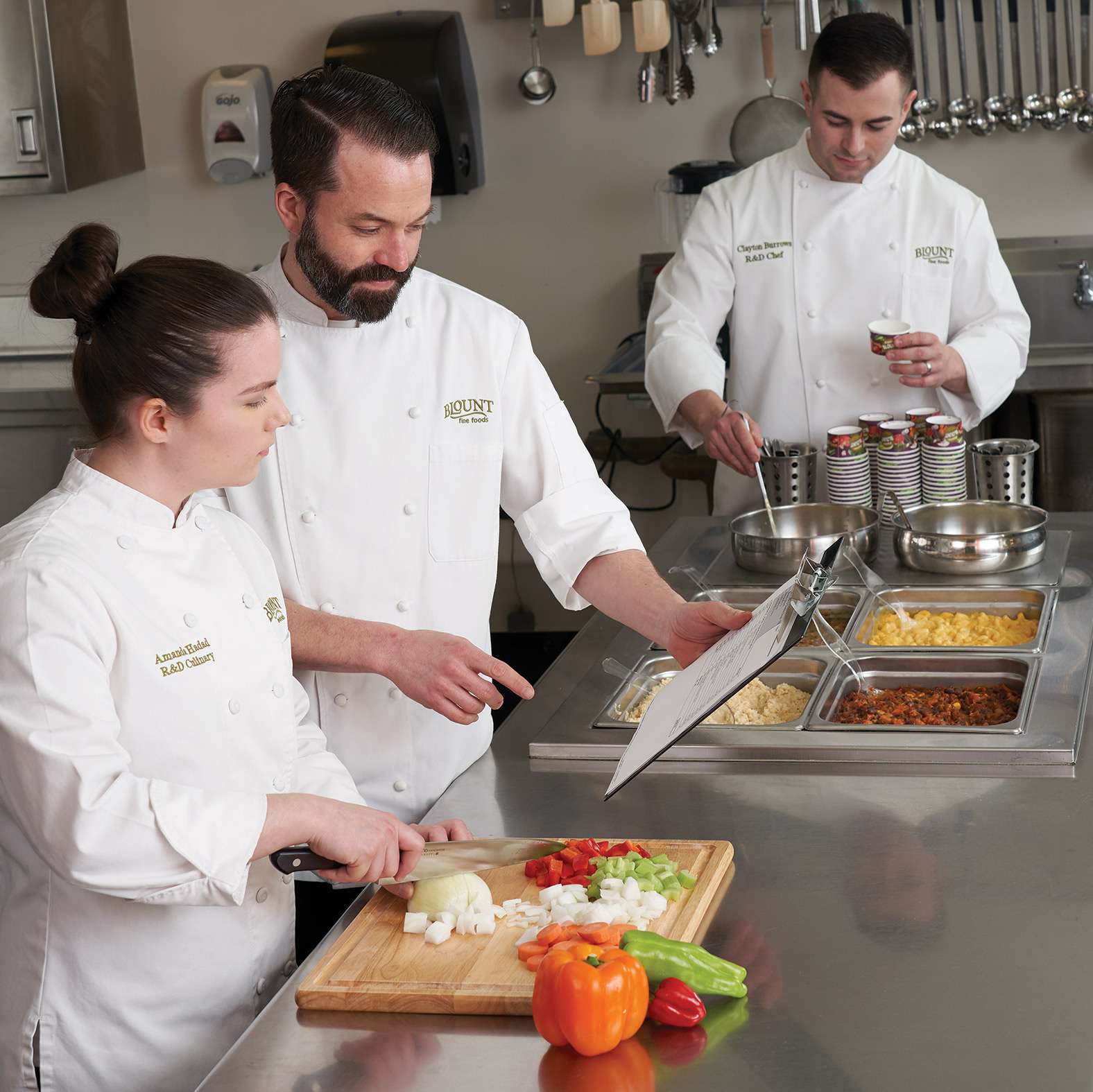 We are firmly committed to food quality and safety and make good on this commitment by using advanced production processes managed by highly responsible people.
We are firmly committed to food quality and safety and make good on this commitment by using advanced production processes managed by highly responsible people.
What matters when it comes to making and eating good food:
- Meeting the dietary needs, wants and tastes of many kinds of people, including the health-conscious and those who follow specialized eating patterns (such as gluten free, dairy free, vegetarian, etc.).
- Providing delicious choices that span health-conscious recipes to indulgent favorites – always using the simplest and highest-quality ingredients possible.
- Constantly improving our track record for environmental and social responsibility and sustainability. How we put our principles into action We ensure premium quality in our products by employing best practices – some of the most important are listed here.
Basics: We make good recipe and ingredient choices Our culinary team is passionate about creating a diverse menu of quality foods using the most wholesome ingredients available, and reducing ingredients to only those that are authentic and essential to the recipe. Health-conscious consumers will appreciate the numerous Blount recipes that fit their lifestyles and food preferences, whether organic, gluten-free, vegetarian, vegan, sodium-conscious or other options. People like to indulge occasionally too. When they do, they should know that we apply the same high standards for unadulterated quality and freshness to our traditional, more sumptuous choices (for example, Lobster Bisque).
We buy from trusted sources: All of our ingredients come from appropriate and responsible sources. For example, our organic produce and meat come from suppliers who have earned recognized organic certifications, and our seafood ingredients come from responsible fisheries and farms that work to sustain fish/shellfish populations and ecosystems. We also seek to buy as local as is practical.
Keeping it simple: All of Blount’s premium-quality foods start with the most simple (and most pronounceable) ingredient list possible. Using real ingredients and rapid, minimal processing retains natural flavors, freshness and nutrition. Artificial preservatives, colors or flavors, hydrogenated oils, monosodium glutamate or other unnecessary ingredients simply have no place in Blount foods.
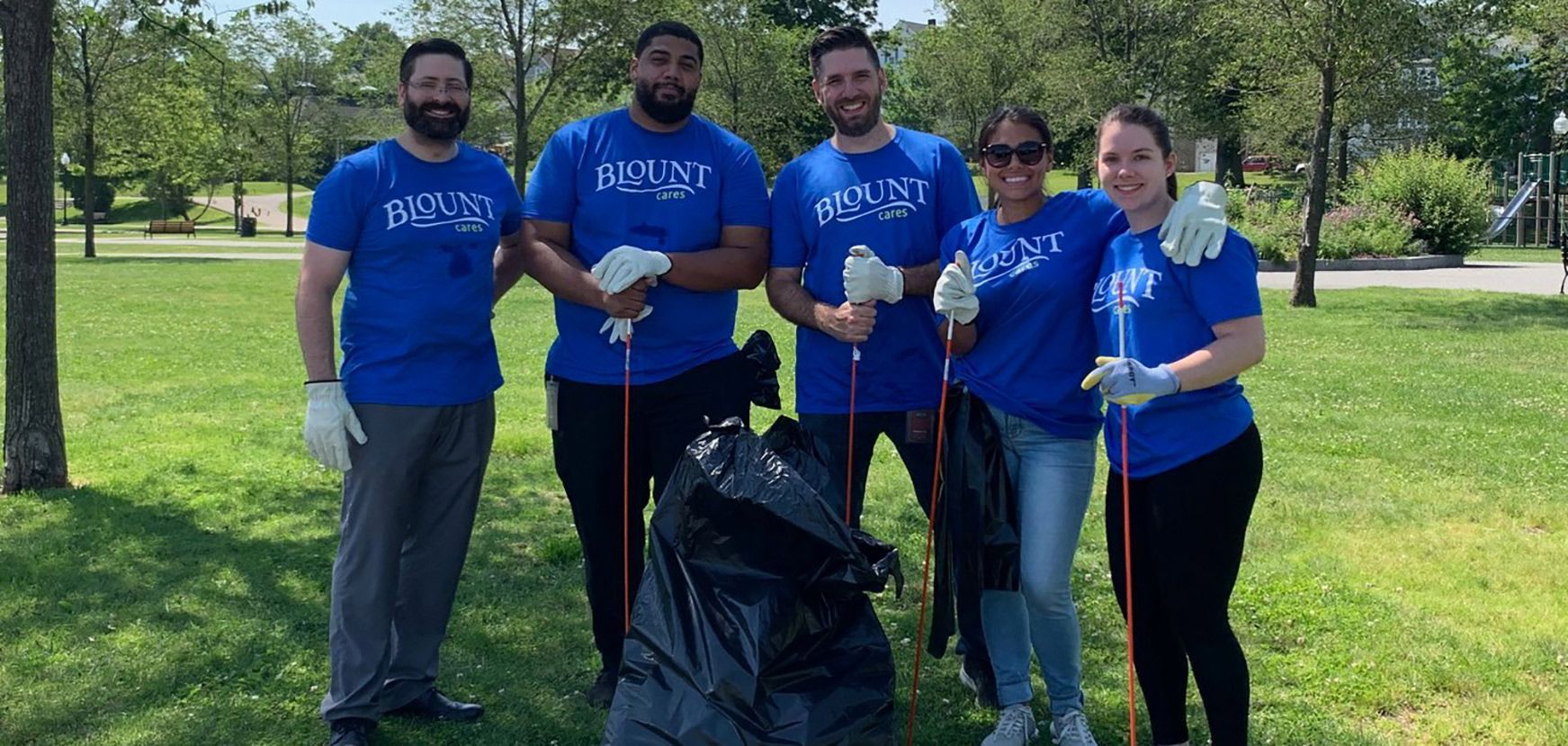
We support the betterment of the communities in which we do business by donating approximately two percent of our profits each year in the form of products and funds to a diverse group of local non-profits. In addition our ‘Blount Cares” program sends dozens of volunteers into the community to serve food and ‘give-back’ in a wide variety of ways.
We support education through a robust intern and scholarship program. Our team is highly involved in university advisory boards and research collaboration. We also offer tuition reimbursement, school loan reimbursement and employee offspring scholarships.
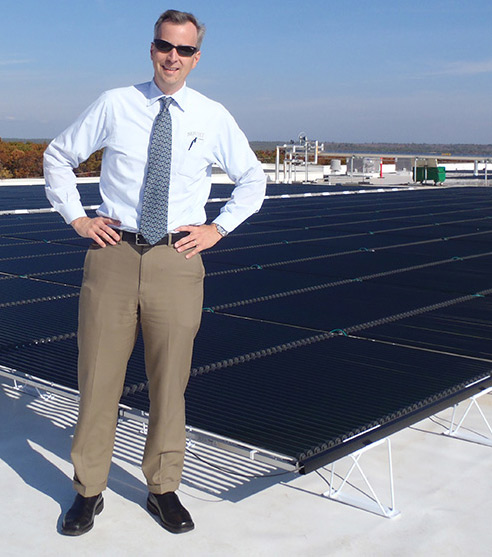 We have long understood our role as stewards of a planet that also belongs to future generations. That’s our view in working with suppliers who employ sustainable land-use and ecosystem management practices. We reduce our energy usage throughout operations by running our own solar energy system (annual output approximately 100,000 kWh) and using high-efficiency refrigeration units. Our Reduce, Reuse and Recycle program is another example of the ways in which we lessen environmental impact. We perform combustion gas analysis to optimize, and reduce emissions from, our process steam boilers systems. We employ predictive maintenance technologies, including infrared thermal imaging, oil spectral analysis and equipment vibration monitoring to ensure peak equipment performance. We have installed biological reactors to naturally remove biological oxygen demand (BOD) from our wastewater effluent streams, and use “food-to-energy” technology for our food waste (www.foodwaste.com). Also, we have a policy of sharing the technology of our proven successes with our customers, vendors and our other food industry partners, to maximize our collective benefit to the environment.
We have long understood our role as stewards of a planet that also belongs to future generations. That’s our view in working with suppliers who employ sustainable land-use and ecosystem management practices. We reduce our energy usage throughout operations by running our own solar energy system (annual output approximately 100,000 kWh) and using high-efficiency refrigeration units. Our Reduce, Reuse and Recycle program is another example of the ways in which we lessen environmental impact. We perform combustion gas analysis to optimize, and reduce emissions from, our process steam boilers systems. We employ predictive maintenance technologies, including infrared thermal imaging, oil spectral analysis and equipment vibration monitoring to ensure peak equipment performance. We have installed biological reactors to naturally remove biological oxygen demand (BOD) from our wastewater effluent streams, and use “food-to-energy” technology for our food waste (www.foodwaste.com). Also, we have a policy of sharing the technology of our proven successes with our customers, vendors and our other food industry partners, to maximize our collective benefit to the environment.
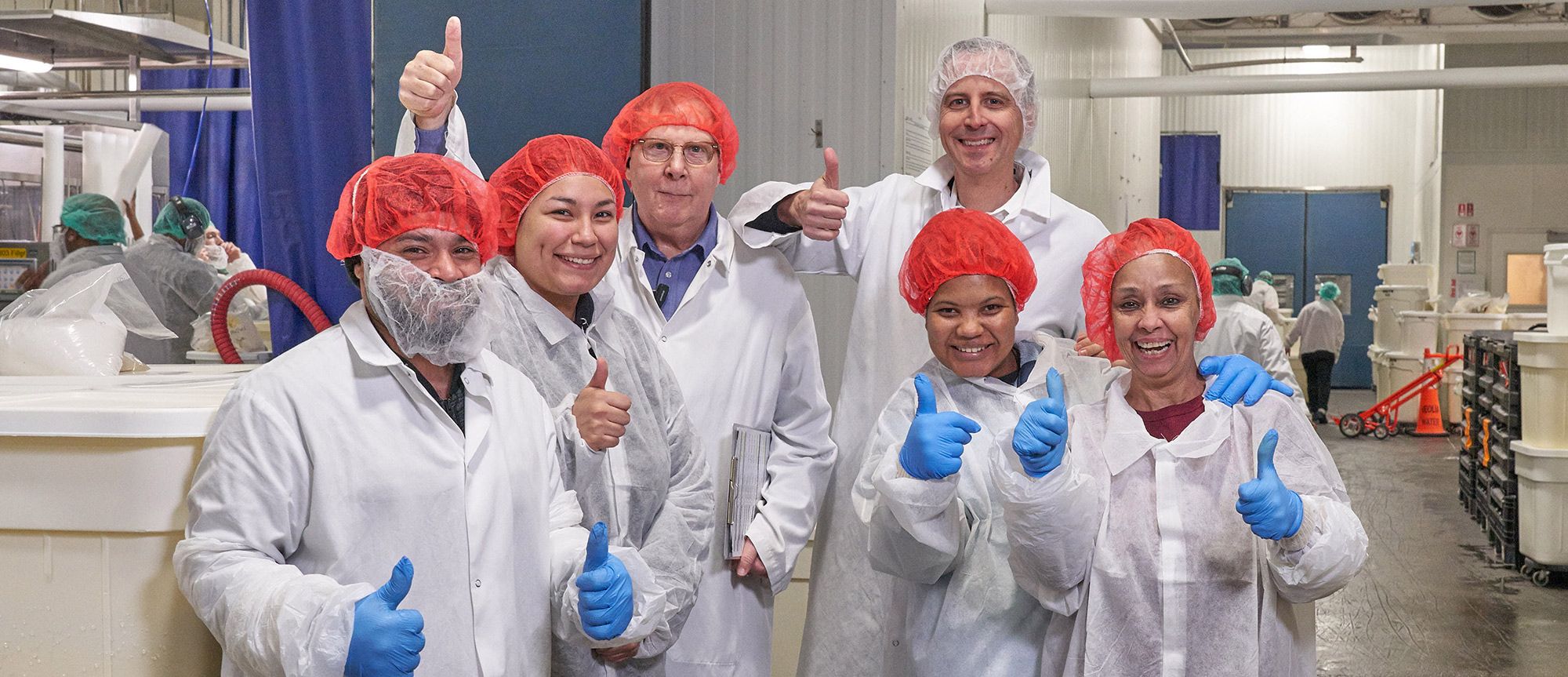
Blount’s culture values each individual contributor on the team. We champion diversity by building a workforce as diverse as the America we feed. We believe attracting, retaining and developing talented, diverse individuals, drives growth, promotes innovation and creates the best environment to achieve our goals and achieve superior business results.
This is rooted in our family-owned professionally-managed organization; and has kept us nimble for over a century. While we have high standards and expectations for each other; we also appreciate that any person can talk and work together on any issue or opportunity on a first name, personal, basis. This culture leverages our competitive and entrepreneurial nature to want to be the leading prepared foods company, leaving behind competitors who lack this personal touch, and the inability to invest long-term in the business and each other. These investments in the long term include infrastructure and capital to grow, as well as personal development for each team member to reach their potential; instilling confidence in the company and the team. Professional development ranks high at Blount. We provide thousands of hours of training yearly and help employees further their education, from GEDs to Master's degrees. What’s more, we help employees and their families manage personal issues through our Employee Assistance Program and provide paid time off to employees for community service work.
From our vendors through to our customers and all the stakeholders in between; we value trust, respect and the relationships that result in performance and success. Our value of “A Championship Team” states that in the end we’ll win and have fun doing so!
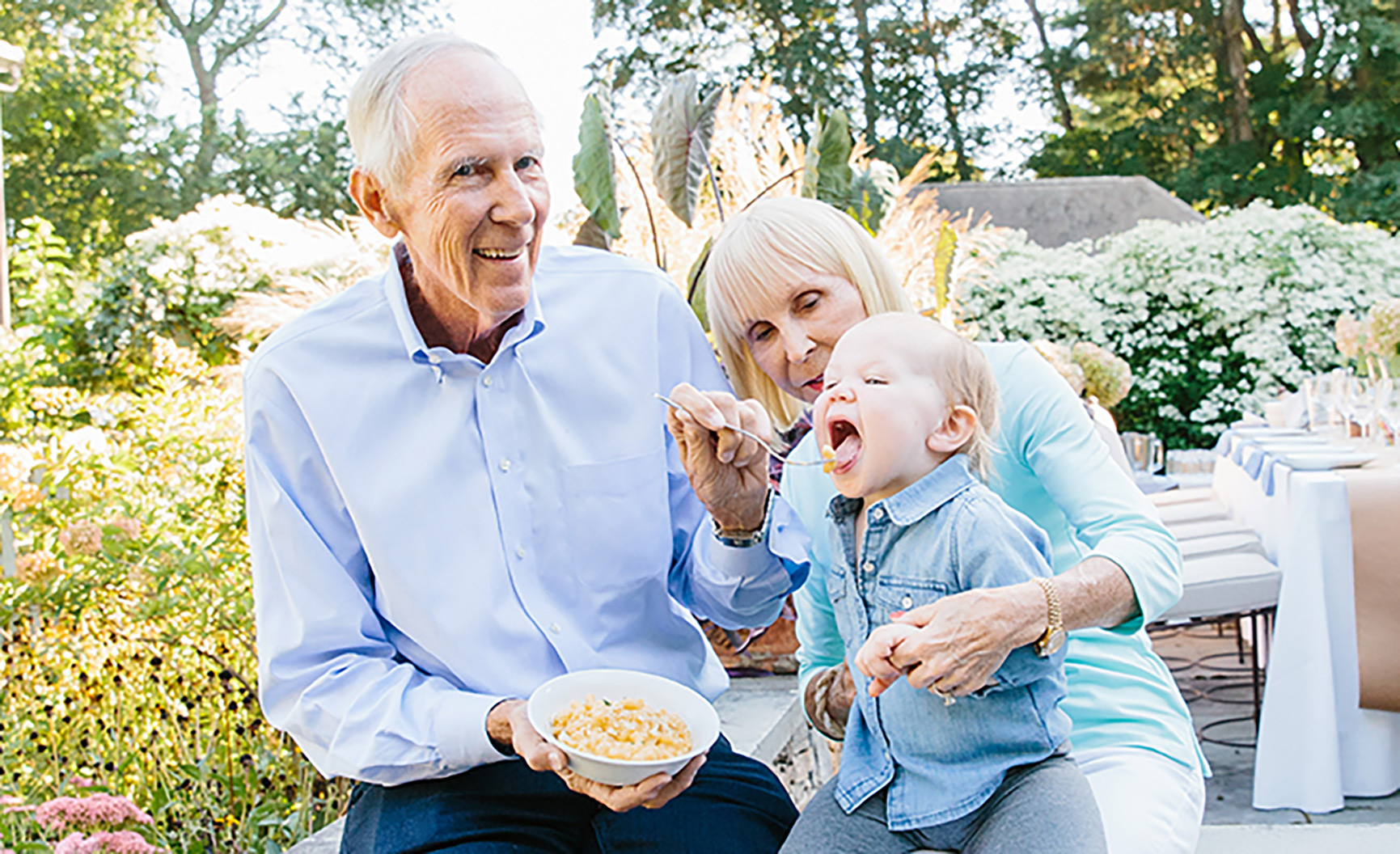 Like our personal priorities; people and relationships are core to who we are.
Like our personal priorities; people and relationships are core to who we are.
Protecting the people for whom we have been entrusted with; the customers who eat our foods, and the people who work within the organization, are our top priority!
Some important thoughts to keep in mind:
Food Safety
The people who buy our products take food safety for granted. We uphold their trust and take pride in earning the Quality Food certification because of the care we take in doing our jobs well.
Employee Safety
Safety is no accident. The effort we put into creating modern facilities and following best work practices enables all of us to be safer and freer to focus on contributing our skills and talents.
Performance
“Firing on all cylinders” is invigorating. When each member of the Blount team is focused on and taking responsibility to perform at his or her personal best, our company succeeds – which enables each of us to succeed. We are proud of our talents and how we put those talents to use. Together, we are a dynamic source for great ideas, creativity and progress. Performing at our personal best is the essence of creating expanded opportunities for all of us.
The Blount Values define who we are; and at the core of each value are people! The Blount culture encourages team members to take initiative, contributing ideas to improve any aspect of the Blount operation. We have respect for all and value their individual talents and contributions. We know that good relationships inside and outside our company have mutual respect at their foundation. We value the well-being of our employees, and strive to maintain a safe and healthy work environment. In the big picture, being helpful and collaborative and creating foods that people love to eat is inherently fun and satisfying. Fun is healthy, and having fun in our work is an unofficial part of Blount job descriptions.
ULTIMATE CUSTOMER EXPERIENCE
Our customers buy into a whole lot more than just America’s best soup. We provide flexible, yet efficient ways to dish up the Ultimate Customer Experience. Any one of us personally goes the extra mile to assure this, even in challenging times. We are better than our competitors because we are real people who communicate, follow through and provide solutions—year after year. We promise to provide customers with their soup, with the high quality they expect, on time and in the quantity ordered.
A CHAMPIONSHIP TEAM
We are competitive, and we’re out to win! We will out work, out think and out deliver our competitors. Our customers are the starting line-up, and we will follow their lead to victory. A championship team is made of people who know they can count on each other to achieve more together than the individuals could ever do alone. Each of us is valuable to the team; we must each do our job with excellence because other people are depending on us. In the end, we’ll win and have fun doing it. Nothing satisfies the soul like success.
A RECIPE FOR SUCCESS
At Blount, victory means market leadership and consistent profitability, from generation to generation. Our recipe for success includes hard work, risk taking, smart thinking and good planning. A key ingredients to long term success, is making investments in people, equipment and systems for the future, well in advance of when they are needed. Like a tree that needs good soil, sun and water, it also needs pruning and harvesting for long term success. We guarantee success for our customers; working together on unique projects, creating awesome products and growing sales. It also means being the place where team members can contribute their talents and enjoy the benefits of success.
GREAT DECISIONS
We’re great at making decisions that are based on doing what’s right. As with individuals, companies benefit when honesty and trust are ingredients in every relationship. At Blount, we refuse to compromise our standards of quality, safety, and integrity. Because we are real people, we use common sense, candor and debate to arrive at the best decision possible. We applaud individual and corporate accountability in all that we do.
THE FINEST FOODS
Our products are awesome! The best products start with a commitment— to creative culinary expertise, the highest standards of quality, and of course, premium ingredients. But the most important ingredient of all, is our people, who take responsibility for a quality process all the way to the moment the consumer delights in this culinary experience. From the home kitchen to the finest restaurants, Blount products are distinguished by great taste and consistency.
1880 Founding the Family Food Business
The third generation of a New England seafaring family, 18-year-old Eddie B. Blount launched an oyster harvesting and sales business in West Barrington, Rhode Island.
He had help from his new father-in-law, long-time oysterman Jonas Buckingham, and formed a partnership with his uncle Reuben Hunt. From that time forward family ties have strengthened the Blount business.
1903 Putting Down Roots on the Warren Waterfront
Putting Down Roots on the Warren Waterfront
1903 Putting Down Roots on the Warren Waterfront
Putting Down Roots on the Warren Waterfront
1923 The Generations Change, the Name Remains
The Generations Change, the Name Remains
1931 Whitecap, The First Brand
Late in the year E.B. Blount’s Sons trademarked its first brand, Whitecap Oysters. The two-masted schooner became emblematic of quality Narragansett oysters and Blount seafood later adopted the Whitecap brand along with several others.
1931 Whitecap, The First Brand
Late in the year E.B. Blount’s Sons trademarked its first brand, Whitecap Oysters. The two-masted schooner became emblematic of quality Narragansett oysters and Blount seafood later adopted the Whitecap brand along with several others.
1938 Environmental Crisis Creates an Opportunity
In September, the sixth most damaging hurricane in US history drove straight through New England with winds of up to 140 miles per hour. The storm scoured the floor of Narragansett Bay, devastating oyster and bay clam beds already depleted by pollution.
This setback for the oyster business created an opportunity for a person willing to try something new.
1943 Nelson Blount Builds on a Big Idea
Determined to make his own start in the family business, Byron’s nephew F. Nelson Blount bought the Warren-based Narragansett Oyster Company.
Nelson was searching for an alternative to the struggling oyster and bay clam business when he learned that rich beds of ocean quahogs lay off the coast. Consumers were not used to the pungent black clams, but Nelson believed he could build a market for them and he did.
As the Narragansett recovered, Blount marketed more popular bay clams, but ocean quahogs remained a staple of Blount’s seafood offerings.
1943 Nelson Blount Builds on a Big Idea
Determined to make his own start in the family business, Byron’s nephew F. Nelson Blount bought the Warren-based Narragansett Oyster Company.
Nelson was searching for an alternative to the struggling oyster and bay clam business when he learned that rich beds of ocean quahogs lay off the coast. Consumers were not used to the pungent black clams, but Nelson believed he could build a market for them and he did.
As the Narragansett recovered, Blount marketed more popular bay clams, but ocean quahogs remained a staple of Blount’s seafood offerings.
1947 Blount Seafood Begins Pioneering
Nelson Blount merged Narragansett Oyster, E. B. Blount’s Sons, and the Plymouth Packing Company to create the Blount Seafood Corporation.
Working with his uncle Byron Blount in the refitted and repainted Narragansett Oyster facility, Nelson Blount developed new equipment for processing clams and concentrating broth.
1947 Becoming “part of the Campbell Family”
Blount becomes the clam supplier to Campbell’s Soup and invites white-coated inspectors to Warren, starting a long tradition of being a valuable partner while maintaining its own product identity.
Nelson Blount considered his company to be “part of the Campbell’s family” and it remained so for another Blount Seafood stuck with Campbell’s for more than a half century.
1947 Becoming “part of the Campbell Family”
Blount becomes the clam supplier to Campbell’s Soup and invites white-coated inspectors to Warren, starting a long tradition of being a valuable partner while maintaining its own product identity.
Nelson Blount considered his company to be “part of the Campbell’s family” and it remained so for another Blount Seafood stuck with Campbell’s for more than a half century.
1966 Managing Supply Problems with Old Products
Blount had long since switched most of its supply over to clams harvested by hand “tongers” from Narragansett Bay. The company was hard-hit therefore, as the bay clam supply began to give out during the 1960s due to pollution and overharvesting. Blount Seafood returned to its original source of supply, ocean quahogs.
1973 New Leadership, New Line
F. Nelson Blount’s son Ted took over a company still in crisis over the diminishing clam supply. An engineer by training, Ted shut down the plant and refitted it for the processing of sea clams, a sweet variety better suited to general American tastes than ocean quahogs.
Ted Blount’s decisive move allowed Blount to win the soup company’s “Select Supplier” designation, and to share its clams with the nation as a staple in Campbell’s best-selling Chunky Soup.
1973 New Leadership, New Line
F. Nelson Blount’s son Ted took over a company still in crisis over the diminishing clam supply. An engineer by training, Ted shut down the plant and refitted it for the processing of sea clams, a sweet variety better suited to general American tastes than ocean quahogs.
Ted Blount’s decisive move allowed Blount to win the soup company’s “Select Supplier” designation, and to share its clams with the nation as a staple in Campbell’s best-selling Chunky Soup.
1980 Diversification Begins with Seafood for Consumers
Supply problems and declining prices indicated that there was trouble in the clam supply business. Just as important, Blount management hoped to provide consumers with its own line of value-added foods.
Blount began to diversify into consumer products such as conch, chowder, and stuffed clams for sale under the Point Judith brand.
1985 Blount behind the label: First “Co-Pack” Arrangement
Blount might have supplied the clams behind the Campbell’s label, but its early experience producing consumer products convinced the company—and prospective customers—that it could provide the label as well.
Only five years after diversifying, therefore, Blount entered into its first contract packaging, or “co-pack,” arrangement, producing and packaging seafood soup for retail sale by the Bayshore Chowder Company.
In time, co-packing for some of America’s biggest names propelled Blount to the top of the fresh soup business.
1985 Blount behind the label: First “Co-Pack” Arrangement
Blount might have supplied the clams behind the Campbell’s label, but its early experience producing consumer products convinced the company—and prospective customers—that it could provide the label as well.
Only five years after diversifying, therefore, Blount entered into its first contract packaging, or “co-pack,” arrangement, producing and packaging seafood soup for retail sale by the Bayshore Chowder Company.
In time, co-packing for some of America’s biggest names propelled Blount to the top of the fresh soup business.
1991 Acquiring Experience and Learning to Sell to Consumers
Blount’s willingness to produce for other labels was always accompanied by a desire to bring its own products to store shelves.
Realizing that the company needed outside help to further its diversification efforts and sell to consumers, Ted Blount hired veteran businessman John Durkin to establish the company’s first concerted sales and marketing effort.
1994 Starting out Small, Todd Blount “Corners” the Soup Business
Ted’s son Todd Blount had started out in big business but “wanted to be part of something smaller.” He got his wish.
Todd was convinced that the company could diversify beyond seafood products, and his father was willing to let him try—so long as he did not disrupt the already cramped Warren production floor. So Todd set up Blount’s first non-seafood soup production line in a corner of the plant—a small start to a big thing.
1994 Starting out Small, Todd Blount “Corners” the Soup Business
Ted’s son Todd Blount had started out in big business but “wanted to be part of something smaller.” He got his wish.
Todd was convinced that the company could diversify beyond seafood products, and his father was willing to let him try—so long as he did not disrupt the already cramped Warren production floor. So Todd set up Blount’s first non-seafood soup production line in a corner of the plant—a small start to a big thing.
1997 HACCP, Setting the Standard for Food Safety
Clam processing was an exacting enterprise, with many steps along the way necessary to ensure that the product was clear of seafloor debris and sand. In fact, some of Ted Blount’s innovations had been in cleaning clams.
In 1996 the Food and Drug Administration required seafood producers adopt the Hazard Analysis and Critical Control Points (HACCP) system for safety. Blount was among the first to comply and the FDA cited the company’s efforts, led by Ted’s brother Steve Blount, as a model for the industry.
2000 New Leadership and a Stronger Focus of Soup
By the time Todd Blount became president of Blount Seafood in 2000, his experiments in soup-making and sales were succeeding.
Determined to focus the company’s efforts on the most promising products, Todd sold the popular but unprofitable stuffed clam line. Blount also acquired Great Soups Incorporated, gaining the expertise and equipment required to begin producing beef and chicken soups.
2000 New Leadership and a Stronger Focus of Soup
By the time Todd Blount became president of Blount Seafood in 2000, his experiments in soup-making and sales were succeeding.
Determined to focus the company’s efforts on the most promising products, Todd sold the popular but unprofitable stuffed clam line. Blount also acquired Great Soups Incorporated, gaining the expertise and equipment required to begin producing beef and chicken soups.
2001 “Hot-to-Go” in the Grocery
During the 1990s supermarkets were increasingly becoming takeouts by installing salad bars and self-service soup counters. Someone had to supply the soup, and Blount stepped in, providing “hot-to-go” soups for the New England supermarket chain customer, Shaw’s.
This was the first step into a line of business that would continually expand and fuel company growth.
2003 The Test Kitchen Provides Better Recipes for Customers and Consumers
As more and more restaurant, hot to go, and supermarket shelf customers turned to the company to replicate and scale up their time-tested recipes, opening of the Blount Test Kitchen was an important next step.
Led by chef Jeff Wirtz, the test kitchen quickly mastered the art of scaling up customers’ existing recipes and then turned to developing its own varieties to appeal to consumers.
2003 The Test Kitchen Provides Better Recipes for Customers and Consumers
As more and more restaurant, hot to go, and supermarket shelf customers turned to the company to replicate and scale up their time-tested recipes, opening of the Blount Test Kitchen was an important next step.
Led by chef Jeff Wirtz, the test kitchen quickly mastered the art of scaling up customers’ existing recipes and then turned to developing its own varieties to appeal to consumers.
2004 The Move to Massachusetts
By the turn of the century Blount was bursting the walls of its plant on the old Warren waterfront and dividing employees and operations between two additional locations as well. In 2004, therefore, Blount consolidated at a new facility in Fall River Massachusetts. Seafood remained in Warren, so at last there was ample room for the burgeoning soup operations—for the time being.
2007 Old Mission, New Name. Endless Possibilities
By 2007, nothing had changed about Blount’s historic mission to provide high quality food to customers and consumers alike. Everything had changed however, about the product line, and although soup was the growth business at the time, Todd Blount was willing to consider other avenues as well.
Therefore, the company acknowledged that its future lay beyond seafood with a name change to Blount Fine Foods.
2007 Old Mission, New Name. Endless Possibilities
By 2007, nothing had changed about Blount’s historic mission to provide high quality food to customers and consumers alike. Everything had changed however, about the product line, and although soup was the growth business at the time, Todd Blount was willing to consider other avenues as well.
Therefore, the company acknowledged that its future lay beyond seafood with a name change to Blount Fine Foods.
2008 Producing the Panera Brand
After building up the production line in Fall River, Blount Fine Foods had the capacity to take on big things.
In 2008 it took on one of the biggest in the soup business: following a tough competition, Blount earned the right to produce Panera Brand soups for retail sales and committed to becoming an effective and invaluable part of the Panera family.
2011 Selling Seafood
Not wishing to compete with its core customers but determined as always to bring its own brand of fine foods to consumers, Blount thought it saw an opportunity in the national turn toward organics.
In 2014 Blount began producing and marketing its own brands of organic soups only to experience two years of disappointing sales. This hard lesson helped teach Blount that consumers wanted clean comfort food rather than trendy organics.
2011 Selling Seafood
Not wishing to compete with its core customers but determined as always to bring its own brand of fine foods to consumers, Blount thought it saw an opportunity in the national turn toward organics.
In 2014 Blount began producing and marketing its own brands of organic soups only to experience two years of disappointing sales. This hard lesson helped teach Blount that consumers wanted clean comfort food rather than trendy organics.
2016 Reaching Western Customers
By the mid-2010s Blount’s market was already nationwide, with its products on store shelves from coast to coast. But it was a difficult reach for a company based in New England.
Acquisition of a second production facility in McKinney, Texas better enabled Blount to reach its customers and consumers east of the Mississippi. It also ensured that some Southwest spices would make it into the soup.
2018 Growing in Fall River
When Blount first moved to Fall River, Massachusetts, it seemed like there was plenty of room to work—but no one expected Blount’s outsized success.
After expanding the first Fall River facility two times, the company finally had to build an entirely new plant and office building nearby.
2018 Growing in Fall River
When Blount first moved to Fall River, Massachusetts, it seemed like there was plenty of room to work—but no one expected Blount’s outsized success.
After expanding the first Fall River facility two times, the company finally had to build an entirely new plant and office building nearby.
2020 Blount’s Family Kitchen Brings Clean Comfort Food to the Refrigerated Section
The experiences with organics had suggested that exotic organics did not have staying power. Focus groups confirmed that consumers were much more often in the market for clean comfort food—that was something Blount could provide.
The company developed a line of entrees under a new family-oriented brand—Blount’s Family Kitchen—and following a careful rollout in the Northeast in 2019, in 2020 Blount’s Family Kitchen hit grocery refrigerated sections nationwide.
